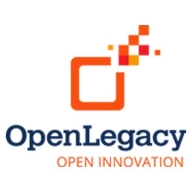

Layer7 API Management and OpenLegacy are two products competing in API management and legacy integration. Layer7 offers a comprehensive feature set, but OpenLegacy gains preference due to its unique focus on seamless legacy integration.
Features: Layer7 API Management is recognized for its robust security, traffic monitoring, and comprehensive policy management. It provides advanced security features like OAuth and access control. It supports integration with SiteMinder and offers excellent content-based routing abilities. OpenLegacy is known for rapid integration capabilities and the ease of extending legacy systems into digital frameworks. It allows the fast creation of APIs for existing legacy systems and offers straightforward deployment processes on platforms like Tomcat.
Room for Improvement: Layer7 could enhance its deployment processes, which could be time-consuming due to extensive configurations. Its user interface could be further optimized for simplicity. Additionally, the integration of newer technologies needs prioritization for better customer satisfaction. OpenLegacy might focus on expanding its documentation to accommodate varied levels of user expertise and could improve its analytics offerings. Compatibility with a wider range of legacy environments could significantly expand its user base while better support for non-standard APIs would be beneficial.
Ease of Deployment and Customer Service: OpenLegacy offers a streamlined deployment model and strong customer support which is highly responsive, aiding quick resolutions. This enhances its appeal for organizations focused on efficient legacy system integrations. In contrast, Layer7's deployment involves extensive configurations that might necessitate more time and effort. Its customer service, while supportive, may not match the promptness of OpenLegacy's support team.
Pricing and ROI: Layer7 API Management entails higher initial setup costs due to its extensive feature set but ensures a steady ROI through reinforced security and operational control. Conversely, OpenLegacy provides a more cost-effective approach with a significant ROI through reduced integration timeframes and the ability to leverage existing legacy systems. Its pricing model appeals to organizations emphasizing rapid integration and cost savings.

Layer7 API Management is a comprehensive solution that enables organizations to securely expose, manage, and monetize their APIs.
It provides features such as API gateway, developer portal, analytics, and security to ensure seamless integration and control over API traffic.
With Layer7 API Management, businesses can streamline their API operations and drive innovation.
OpenLegacy helps organizations quickly launch innovative digital services by extending their core back-end systems to the web, mobile and cloud in days or weeks versus months. Our microservice-enabled API integration and management software quickly reduces project backlog by automating and accelerating microservices and API creation, deployment, testing and management from core applications, mainframes and databases. Together, business and IT teams can quickly, easily and securely meet consumer, partner or employee demands for digital services without modernizing or replacing core systems, and without special programming skills or invasive changes to existing systems and architectures. OpenLegacy is designed for ongoing management of microservices APIs and is based on open standards, so our software plays nice with your current technology stack and supports agile, DevOps and continuous development. Learn why leading companies choose OpenLegacy at www.openlegacy.com.
We monitor all API Management reviews to prevent fraudulent reviews and keep review quality high. We do not post reviews by company employees or direct competitors. We validate each review for authenticity via cross-reference with LinkedIn, and personal follow-up with the reviewer when necessary.